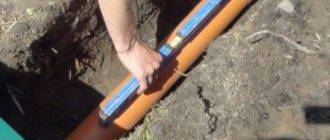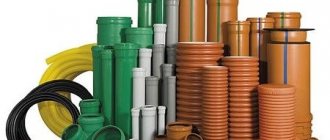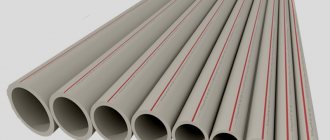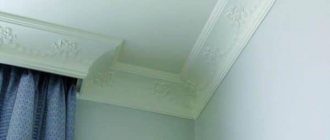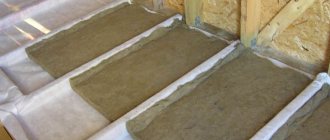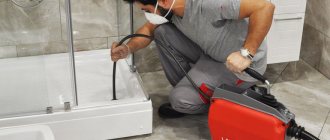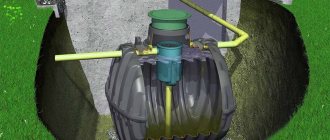In water supply, sewerage, heating and other utilities systems, an extensive network of pipelines is used to pump liquid products.
The joining of their elements is not complete without sealing materials that provide additional insulation of the joints and prevent the occurrence of leaks.
Anaerobic sealants are the most modern means for sealing threaded connections of pipelines. Over time, they do not dry out or collapse, and when disassembling the elements, they do not crumble or clog the pipes.
We have identified several pipe sealants on the market today, compared their properties and compiled a rating that includes the 5 most popular samples in 2021.
Why is the bias made?
In order for the water flow in the sewer to wash away solid particles, the pipes must be laid at an angle. In this case, the angle of inclination of the sewerage system must comply with the standards established by SNiP. But in pursuit of installation speed or using the labor of unskilled workers, you can end up with a sewer system made with serious errors:
- Ignoring the established standards, they do not make a slope at all or the sewer angle is very small. Thus, the movement of wastewater will be excessively slow and plugs of solid particles will begin to form in the pipes. Very quickly this will lead to the need to clean out the entire sewer system, because if a toilet is installed, but the pipe slope is not adjusted, then there will be practically no flushing and feces will begin to decompose right in the pipes, spreading the smell throughout the house.
- The angle of the sewer pipe is made too large. In this case, the drains through the pipes will move too quickly, washing the solid particles, but not taking them with them. This fact will again lead to clogged pipes, which will have to be cleaned regularly.
If the angle of inclination is incorrect, the water flow does not work Source termo-house.com
Do not neglect the standards established in SNiP, since they were determined based on calculations and observations over many years.
Main components of a shower cabin
Plumbing fixtures have an internal filling and a main frame consisting of a pallet, walls and doors. The connection method affects strength and tightness, and the method of moving the sashes affects convenience and compactness. Contact between the doors is ensured by rubber seals. Some variations are assembled without a back wall. They cost less, but cause additional complications. Cabins also come in complex curved shapes. Their walls may not have a suture connection and smoothly move in another direction. Only a limited number of cabins have a roof. It’s definitely better with it, because this way the water won’t get on the ceiling and walls. Spacious multifunctional models are often closed. Shower plumbing is equipped with control panels, top water supply, devices for water treatments, and sometimes small ventilation holes and fans.
Pallet: shape, material and dimensions
Buyers see a wide variety of shapes on the market: rectangular, square, oval, round, angular, semicircular, multifaceted. More original bases such as shells, snails and leaves are also made. They also sell showers with multi-level trays. Among other things, the bases are divided into 3 categories - from low with a side height of 4.5 cm to high with a height of up to 18 cm and more.
The sides of the pallets reach 130 cm in length, with a minimum of 70 cm. The most widely used models are those with side and height parameters of 1000×1000×140 mm, 900×900×70 and 900×900×50 mm.
Metal, acrylic and ceramics are used as base materials. Cast iron and steel products have largely different characteristics, and acrylic options are something in between. They also produce ceramic products: porcelain, earthenware, etc. Original and presentable models are made from stone. Acrylic pallets are considered the best in terms of their overall qualities.
Walls
The side surfaces can be symmetrical or asymmetrical, smooth or curved. Simple designs usually have two or three walls, and these options have another side in the form of a door/doors. The width of regular walls is 70, 80, 90, 100 cm, and in large models - from 110 to 140-150, also with an interval of 10 cm. Non-standard ones have the same difference, but have a width of 75, 85, 95, etc. Among non-standard parameters, manufacturers prefer the size of 85 cm. The width of the elongated walls corresponds to typical bathtub lengths: from 120 to 200 cm with a difference of 10 cm. The most popular sizes are 120, 140, 160 and 170 cm. Width with an unrounded value like 93 or 103 cm are ordered if we are talking about planning a miniature area of the room. The height varies from 190 to 230 cm with an interval of 5 cm. Indicators in the range of 210–225 cm are considered optimal, but taller models are better in practice.
Doors: types of structures and their sizes
By design, they are sliding and hinged. There are many times more models of the first type. Their sliding doors open using a roller mechanism. The space savings are double. Other advantages include convenience and tightness. The few swing models open in different directions, and none of the options has an advantage over sliding doors. The latter are increasingly competing with articulated and rotary modifications. An example of the first alternative is folding and “book” models. For rotary doors, the door is opened and moved to the side.
The doors of the sliding cabins range from 40 to 140 cm in width. For square doors, the standard size is 40, 45 and 50 cm. Curved leaves are made with a width from 80-90 to 120-140 cm. The dimensions of swing doors are usually 500, 600 and 700 mm, that is, approximately “in the middle” between different sliding doors .
Correct sewer slope
For those who do not know how exactly the data in SNiP documents is deciphered, it should be kept in mind that all standards are indicated in the form of fractions. For example, the inscription 0.03 and 0.008 reads as follows: a pipe one meter long at one end rises by three centimeters, at the other it is raised only eight millimeters. If there is only one number, it means one end of the pipe is at the zero mark, and the other is raised to a given height.
Since the sewer pipeline is much longer than a meter, a formula is used to measure the slope, where the upper end of the pipe is determined as follows: based on the standards, for example, three centimeters of slope is taken per meter, which is multiplied by the entire length of the pipe. As a result, it will be determined how far the upper end of the pipeline needs to be raised.
With a pipe length of 25 meters, the calculation looks like this: 3 * 25 = 75. That is, the slope of the sewer pipe should be 75 centimeters at one end.
SNiP standards for the angles of inclination of sewer pipes depending on their diameter Source pinterest.com
Since sewerage is laid not only in the house, but also outside it, the slope is maintained throughout the entire pipe. At the same time, it is determined depending on the diameter of the pipes - the smaller it is, the greater the slope. There are times when it is impossible to meet the standards, in which case small deviations are allowed. But it should be taken into account that in this case everything must be carefully calculated so that there are no problems with the operation of the sewerage system.
See also: Catalog of companies that specialize in water supply and sewerage.
Faucets
Faucets provide a successful water supply system, forcing sinks to abandon the archaic separate “cold” and “hot” taps. The revolutionary design combines both faucets in one housing and mixes the water flowing out.
Mixers are:
- internal (the main unit of the device is hidden from the wall)
- external
Chrome and brass are used to make faucets, although to obtain a truly modern design it is necessary to opt for additional coating of chrome and brass with nickel coating or special enamel.
A joystick is invariably attached to the mixer - a lever for water intake equipment that regulates the water temperature and the intensity of its flow. By turning left/right, raising and lowering the joystick handle, you can easily keep water operations under control.
Another element of the mixer, which, however, is absolutely not considered mandatory to use, is the “ecological button”. The button allows you to significantly save water by limiting the flow of water entering the mixer and its temperature.
Accordingly, if you have such a button, you suddenly want to increase the pressure power and take a scalding shower, you just need to turn off this “filter”.
What to do if it is impossible to maintain the desired tilt
There are cases when difficulties arise during installation, leading to the fact that the angle of inclination of the sewer differs significantly from the permissible standards. In this case, take the following measures:
If calculations show that deviation from the specified standards is possible, then lay the pipes, but at the same time make additional tees at a certain distance through which the pipes will be cleaned.
When laying the pipe, still adhere to the recommendations, but in difficult areas, establish height differences, which are organized through additional wells. Thanks to this solution, it will be possible to install the pipe at the desired angle. There can be one or several such wells, but correct calculations and installation guarantee proper operation of the sewerage system.
There are several ways to achieve the desired slope of sewer pipes Source vodasovet.ru
As a last resort, if it is impossible to maintain the required slope and calculations show that the operation of the sewage system by gravity is impossible, then you will have to use a fecal pump. This device can be installed both on a local sewer branch and for the entire system.
When laying pipes made of plastic, you can be sure that they will need to be cleaned much less frequently than cast iron, since the smooth inner surface of the walls allows solid substances to slide.
Advantages of silicone sealant
Silicone sealant contains silicone polymer and additives that increase its strength, adhesion and accelerate polymerization time. Silicone is mainly used for internal sealing of joints; its advantages are the following factors:
- High adhesion of the material to metals, plastics, ceramics, glass, enamel, stone.
- The material provides a long-term elastic connection without cracks.
- The temperature range of silicone is from -50 to +180 C, high-temperature domestic varieties are capable of operating at temperatures up to +260 C and briefly up to +350 C.
Maintaining the angle
Determining the angle of inclination of the sewer pipe is only half the battle. The main difficulty is to maintain it during installation, for which they use a special level with an inclinometer.
Level with electronic goniometer Source tarnaya-doska.ru
If for some reason the protractor does not work, but knowledgeable craftsmen can maintain the desired slope using a regular level. There are several methods for this, and for each of them you need to do a little preparation:
- An oblique line is drawn on the wall corresponding to the selected slope. A level is applied to it and a mark is placed on it in the area of the air bubble. After this, the pipe is aligned in accordance with the location of the bubble. The method is not very reliable, as it allows for a certain error.
- Using a meter level, a special lining is used that will correspond to the angle of inclination.
Sinks and sinks
There was a time when the range of manufactured products was limited to a dozen minor variations of the same design - an enameled steel container with or without a shelf, one standard depth or another.
Nowadays, the choice is such that a whole book would not be enough to list all the options on the market. Simpler sinks and more complex sinks, faience, ceramic, even marble, a million colors and shades, sinks on the “leg” with hidden communications in it and sinks with wall mounting, washbasins in the style of all Louis, “English” sinks with an overflow and a stopper on a gilded chain, simple and two-section sinks, built into the kitchen table and with the usual mounting on brackets, larger and smaller sinks, sinks with a smooth bottom and sinks with fins inside... and so on, and so on, and so on. Shape, color and material are limited only by your taste and wallet.
It is simply impossible to make any significant changes to the design of these two most important plumbing elements. All innovations relate only to design and also to the method of connecting water fittings. Thus, some sinks and sinks provide separate fastening of the faucet spout and its control handles. It is clear that it is difficult to install a standard mixer on these. Some sinks have two holes spaced quite far apart in the shelf. Do not try to attach a faucet with two separate pipes to them - this is a sink for a modern single-body, or single-command, faucet. The second mounting hole is provided for installing a sprayer (an additional device for which water is prepared by a mixer). A single-handle faucet for such a sink must have a special pipe with a hose and an adapter for powering the sprayer, as well as a spout/spray switch lever.
When choosing a ceramic or earthenware sink for a bathroom with one mounting hole in the shelf, pay attention to whether it has special pins on the reverse (bottom) side for the inlet pipes of a traditional mixer. Otherwise, you will have to either install a herringbone without a shower hose, whose spout will not reach the bathtub, or purchase a still not the cheapest mixer with a joystick, which, again, requires a separate unit for the bathroom, or put up with a gaping in the dazzling faience with a hole, installing a traditional common faucet with horizontal connections on the wall.
Preparing for work
Before you begin installing the sewer system, you will need to prepare the following tools and materials:
- plastic pipes that have a cross-section of 5 and 10 centimeters;
- elements that will be used to connect pipes;
Pipes and connecting elements for sewerage installation Source 911stroy.ru
- cuffs for sealing joints;
- glue intended for gluing plastic;
- marker, tape measure, level and saw;
- cement.
If the sewer system is not being made new, but the existing one is being reconstructed, then before proceeding with installation, you need to study the old structure or photograph it. After this, you need to draw up a plan for installing the new system:
- a drawing is drawn onto graph paper, where all wiring points and bathrooms are displayed, distances are determined and the riser is marked;
- it is checked that the new plan coincides with the existing sewer system;
- then calculations are made and the amount of material required is determined.
Classification
Let's start with classification.
Connections can be:
- Sealed and not sealed. Of course, the former are used in all pipelines, the latter - when assembling various metal structures.
- Sealed connections, for their part, are divided into pressure and non-pressure. The primary area of application of the latter is a variety of sewage systems: domestic, industrial and storm water.
But: sewerage can also be pressurized. If it is necessary to transport wastewater up a slope, this function is taken over by a fecal (drainage) pump.
- In addition, the connection can be dismounted or non-demountable.
Let's move on to specific solutions.
How to choose pipes
When choosing pipes, you need to pay attention to their color - sewer pipes are painted gray. The different cross-sectional diameters indicate that each type is designed to perform separate functions.
If an existing sewer system is being reconstructed, the operation of which has had no complaints, then the easiest way is to compare the diameter of the old pipes with the new ones - errors in this case are practically eliminated.
Depending on the purpose, sewer pipes and tees come in different diameters Source besplatka.ua
In addition, during installation you need to take into account what household appliances will be connected to the system. To drain water from a dishwasher and washing machine, a diameter of 2.5 centimeters will be enough; for a bathtub and shower you will need 3.5 centimeters. In general, pipes no larger than 5 centimeters in diameter are installed throughout the house, but for the riser you will need to purchase a pipe with a cross-section of 11 centimeters.
In order not to buy unnecessary materials or miscalculate, it is best to measure the old pipes and make a purchase accordingly. In addition, in accordance with the old design, the same number of connecting elements is purchased.
Valves
Cast iron, steel or brass valves are necessary to prevent water from flooding your apartment in the event of various plumbing problems. Close the valve (by twisting it in the right direction) and proceed with the repair.
As a rule, in an apartment you need valves for the cold and hot pipelines. A control valve is installed at the main inlet or branch from the drain, which will help you shut off all water supply to carry out global repairs.
Execution of work
After all the preparatory work has been completed, you can proceed directly to installation. First of all, you need to disassemble the old system. The work is carried out as follows:
- First, problem areas are identified where additional work will have to be carried out. This could be where the pipe goes through the wall.
- Using a chisel, the dismantling of cast iron pipes begins. In this case, cast iron must not be allowed to enter the main line of the sewer system. Otherwise, it may malfunction.
Working with cast iron sewerage is not the most aesthetically pleasing sight. Source domvpavlino.ru
- If replacement of the main riser is not expected, then the pipe from it is sawed off using a grinder.
After dismantling has been carried out, work stops until the connecting units cool completely.
Installation of modern plastic pipes can be done in two ways.
Installation of plastic pipes using glue
- pipes are cut into pieces of the required length;
- the edges are cleaned with sandpaper;
- the edges are degreased;
- pipes are checked for compatibility;
- glue is applied in the right places;
- the processed elements are connected to each other;
- when two pipes are compressed, a roll is formed, reminiscent in color of liquid honey;
- The glue dries within an hour.
Installation of plastic pipes using welding
- installation also begins with cutting pipes to the required length and stripping;
- the soldering device heats up to a temperature of at least 260 degrees;
- connectors and pipe are fixed on the soldering iron;
- the parts are heated to the required temperature;
Welding plastic pipes Source 2gis.ru
- pipes are connected in heated places;
- seams are checked for integrity.
Cement
Sealing the joint with cement
When sealing a cast iron socket, Portland cement can be used. This substance dries quickly and provides reliable protection against leaks and accidents. For sealing, a high-quality grade of Portland cement is used. When working with Portland cement, it is necessary to apply the mixture over the joint.
A plumber's wrap is applied to the end of the pipe, and resin strands can be used for thick channels. The end is inserted into the socket, compacted and filled with Portland cement. This design will last for many years.
True, when dismantling it, your followers will have a lot of difficulties. But that is another story.
Important points during installation
It is important to start installing the sewer system from the highest points. This will make it much easier to maintain the desired slope. In this case, the sockets must be located against the flow of wastewater. Throughout the entire work, the angle of inclination of the sewer pipes is monitored. This is done either using a level or marks on the wall.
Since the old sewer system is made of cast iron pipes, it is natural that modern plastic pipes will be joined in some places with old cast iron pipes. To do this, special fittings are used, with the help of which a plastic pipe is inserted into a section of cast iron pipe in a vertical position.
When installing a sewer system, the most important thing to pay attention to is the areas where the pipe, lying in a horizontal position, connects to a vertical riser. In this case, you cannot make this connection at an angle of 90 degrees. In order for the system to work perfectly and no turbulence forces arise during water flow, two transitions are made in the form of elbows in an inclined position at an angle of 45 degrees.
Using two adapters with a 45° slope to transition a pipe from vertical to horizontal Source rinnipool.ru
Epoxy resin (glue)
PVC sewerage equipment that is significantly worn out, with numerous damages, is repaired using epoxy resin. The material is necessary to eliminate leaks when repairing PVC pipes.
Through cracks discovered after inspection of the equipment are sealed using a two-component adhesive composition. The mixture is prepared immediately before use, following the manufacturer's recommendations.
Fragile types of sewerage (cast iron, ceramics) can also be sealed using epoxy resin. Such pipes require a stronger and more reliable connection, which epoxy glue does well.
Fixing a leak is quite easy if you use epoxy resin . The composition is used in combination with a hardener, and the ratio of components to form the working mixture is 1:2 or 1:1.
To seal seams and emergency areas, epoxy resin is mixed with a hardener and applied to the break site. The mass dries quickly, serves for a long time and reliably, and is resistant to aggressive acids and alkalis.
The polymerization reaction proceeds much faster when the temperature increases by 10˚ C. The sealing of the resulting cracks is quite strong, since the epoxy composition has minimal shrinkage, high resistance to adverse factors, and stable physical and mechanical characteristics.
Epoxy adhesive is obtained by mixing resin and hardener in a ratio of 1:10, and distilled water is used to form a composition with water-borne resin.
Epoxy resin is a common material for connecting PVC sewer pipes. The joint is sealed by pouring resin into the gap, and to obtain a lasting result it can be used in hot and cold conditions.
Leaky connections
Connecting elements for pipe structures used for leaking connections can be divided into two categories.
- First, the inserted pipe is fixed with one or more screws. Fixation requires fairly minor reinforcement, but the strength of the connection is also low.
- The second are all kinds of clamps. Basically, they are made up of two or more parts, which are tightened with bolts, squeezing a round or profile pipe.
The appearance, shape and size of the connecting elements, of course, can be very diverse.
List of materials
First, let's remember what types of pipes are used in the construction of water supply networks.
- Black steel. Recently, it has lost its former popularity due to the spread of polymer materials, but still holds its ground due to its high mechanical strength.
It is worth clarifying: in centralized water supply networks, the standard pressure is 3 – 6 kgf/cm2. However, in a number of cases (sharp opening of shut-off valves or its malfunction during density testing of the heating main), it is possible that this value may be briefly exceeded - up to 12 - 20 kgf/cm2.
- Galvanized steel pipe. It compares favorably with black steel in its corrosion resistance.
- Corrugated stainless steel.
- Copper.
Copper plumbing.
- Metal-plastic is a three-layer structure made of cross-linked polyethylene and aluminum, providing mechanical strength.
- Polypropylene (without reinforcement; fiber reinforced; aluminum foil reinforced).
- Polyethylene used exclusively for cold water supply due to limited heat resistance.
How to connect water pipes in each specific case?
Black steel
Welding
The main method of connecting steel pipes is welding, electric arc or gas.
- Arc welding is the fusing of electrode material, melted by an electric arc, with insulation of the seam with molten slag - the electrode shell. Large currents (200 amperes or more) are provided by a welding transformer.
- Gas welding involves using a torch flame to melt the edges of the seam, to which a mixture of oxygen and acetylene is supplied. The seam material is welding wire melted in the same flame.
Gas welding.
Threads
A threaded connection, unlike a welded one, allows for disassembly. The threads on the edges of the pipes are cut manually, on a screw-cutting lathe, or simply welded.
To seal threads the following can be used:
- FUM tape. It is somewhat inconvenient in that it leaks with minimal thread reverse.
- Thread - sealant for connecting water pipes does not have this drawback; however, the price of 150-200 rubles for 30 meters of thread will not appeal to everyone.
Thread sealing with polymer thread.
- Plumbing linen is cheap, but not very durable: it rots in cold water and fades in hot water.
However: impregnation with paint, drying oil or silicone sealant eliminates this problem, making winding with flax strands extremely durable.
Quick release fittings
The fitting for a steel pipe is a simple design with a union nut, a spacer ring and a rubber or silicone ring gasket. When the nut is tightened, the pipe is securely pressed against the O-ring.
The cost of a quick-release fitting starts from about 150 rubles; its installation requires careful cleaning of the pipe surface from rust and paint.
Quick-release fitting.
Circuit examples
The pipe layout in each apartment, even in a standard house, is individual - plumbing and household appliances are arranged differently, and naturally the layout will be different. In reality, everything is not so complicated, you just need to decide on the basic parameters of the circuit - where to supply the water and the type of wiring - will you pull in parallel or in series. Then everything is dictated by the position of consumers. To make it a little easier, let's add a few more diagrams and photos.
An example of pipe routing according to a manifold diagram
The peculiarity of this scheme is that a thicker pipe from the hot water supply goes to the heated towel rail.
This was done to ensure better heating. An example of sequential wiring - equipment at the entrance to the apartment to increase security
When bringing the mixer to the installation site, it is necessary to maintain precise distances
When installing a hidden water supply system, some of the pipes can be hidden in the floor. It will be impossible to repair them, but they will be beautiful...
Pipes are laid parallel
A valve is installed on each outlet
A way to hide pipes in the bathroom along the wall
